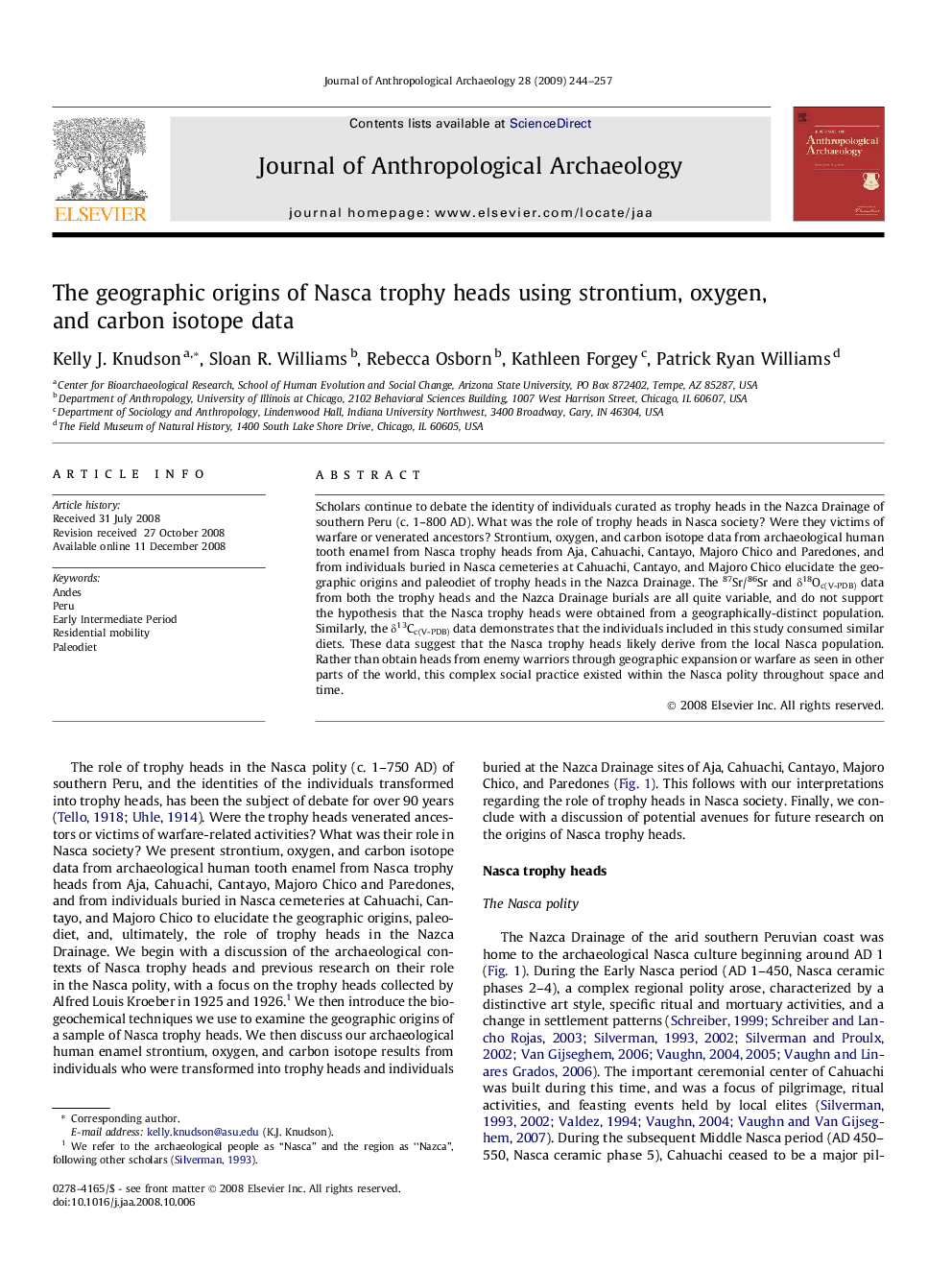| Article ID | Journal | Published Year | Pages | File Type |
|---|---|---|---|---|
| 1035175 | Journal of Anthropological Archaeology | 2009 | 14 Pages |
Scholars continue to debate the identity of individuals curated as trophy heads in the Nazca Drainage of southern Peru (c. 1–800 AD). What was the role of trophy heads in Nasca society? Were they victims of warfare or venerated ancestors? Strontium, oxygen, and carbon isotope data from archaeological human tooth enamel from Nasca trophy heads from Aja, Cahuachi, Cantayo, Majoro Chico and Paredones, and from individuals buried in Nasca cemeteries at Cahuachi, Cantayo, and Majoro Chico elucidate the geographic origins and paleodiet of trophy heads in the Nazca Drainage. The 87Sr/86Sr and δ18Oc(V-PDB) data from both the trophy heads and the Nazca Drainage burials are all quite variable, and do not support the hypothesis that the Nasca trophy heads were obtained from a geographically-distinct population. Similarly, the δ13Cc(V-PDB) data demonstrates that the individuals included in this study consumed similar diets. These data suggest that the Nasca trophy heads likely derive from the local Nasca population. Rather than obtain heads from enemy warriors through geographic expansion or warfare as seen in other parts of the world, this complex social practice existed within the Nasca polity throughout space and time.
